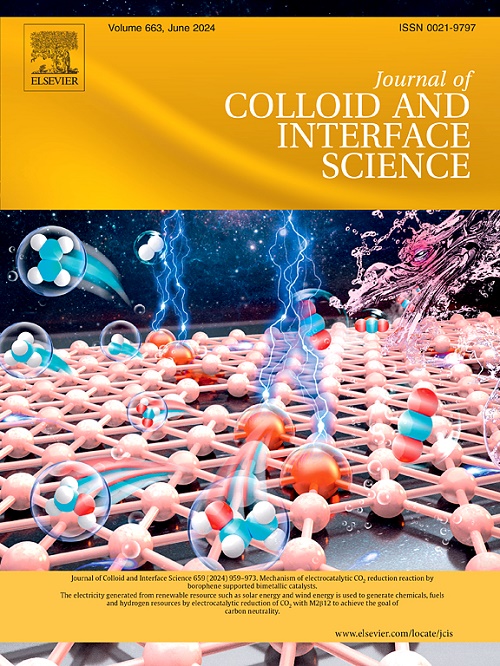Uniform phosphazene containing porous organic polymer microspheres for highly efficient and selective silver recovery
IF 9.4
1区 化学
Q1 CHEMISTRY, PHYSICAL
引用次数: 0
Abstract
The efficient extraction of silver ions (Ag+) from Ag+-contaminated wastewater is crucial for resource recovery and environmental protection. However, the synthesis of adsorbents with high adsorption capacity and superior selectivity for Ag+ is a significant challenge. Herein, a series of phosphazene-based porous organic polymers (POPs) microspheres with exceptional selectivity and adsorption capacity for Ag+ were rationally designed using phosphazene and aromatic amines. Notably, variations in the types of precursors induced the formation of a microsphere-like morphology with precisely controlled surface smoothness. Considering the advantages of abundant heteroatom active sites, surface charge properties and microsphere-like morphology, the synthesised networks exhibited an exceptional Ag+ adsorption capacity of 818.3 mg/g in aqueous solution at 45 °C, showcasing remarkable selectivity (selectivity coefficient (Kα) 3.39 × 105) and an ultrafast adsorption rate, adsorbing Ag+ in just 5 min. These superior adsorption characteristics surpassed those of most reported POPs. Theoretical simulations further revealed that key structural motifs, particularly phosphazene units, played a critical role in enhancing Ag+ adsorption. This study proposes a promising strategy for the efficient recovery of Ag from wastewater using high-performance porous adsorbents.

求助全文
约1分钟内获得全文
求助全文
来源期刊
CiteScore
16.10
自引率
7.10%
发文量
2568
审稿时长
2 months
期刊介绍:
The Journal of Colloid and Interface Science publishes original research findings on the fundamental principles of colloid and interface science, as well as innovative applications in various fields. The criteria for publication include impact, quality, novelty, and originality.
Emphasis:
The journal emphasizes fundamental scientific innovation within the following categories:
A.Colloidal Materials and Nanomaterials
B.Soft Colloidal and Self-Assembly Systems
C.Adsorption, Catalysis, and Electrochemistry
D.Interfacial Processes, Capillarity, and Wetting
E.Biomaterials and Nanomedicine
F.Energy Conversion and Storage, and Environmental Technologies

 求助内容:
求助内容: 应助结果提醒方式:
应助结果提醒方式:


